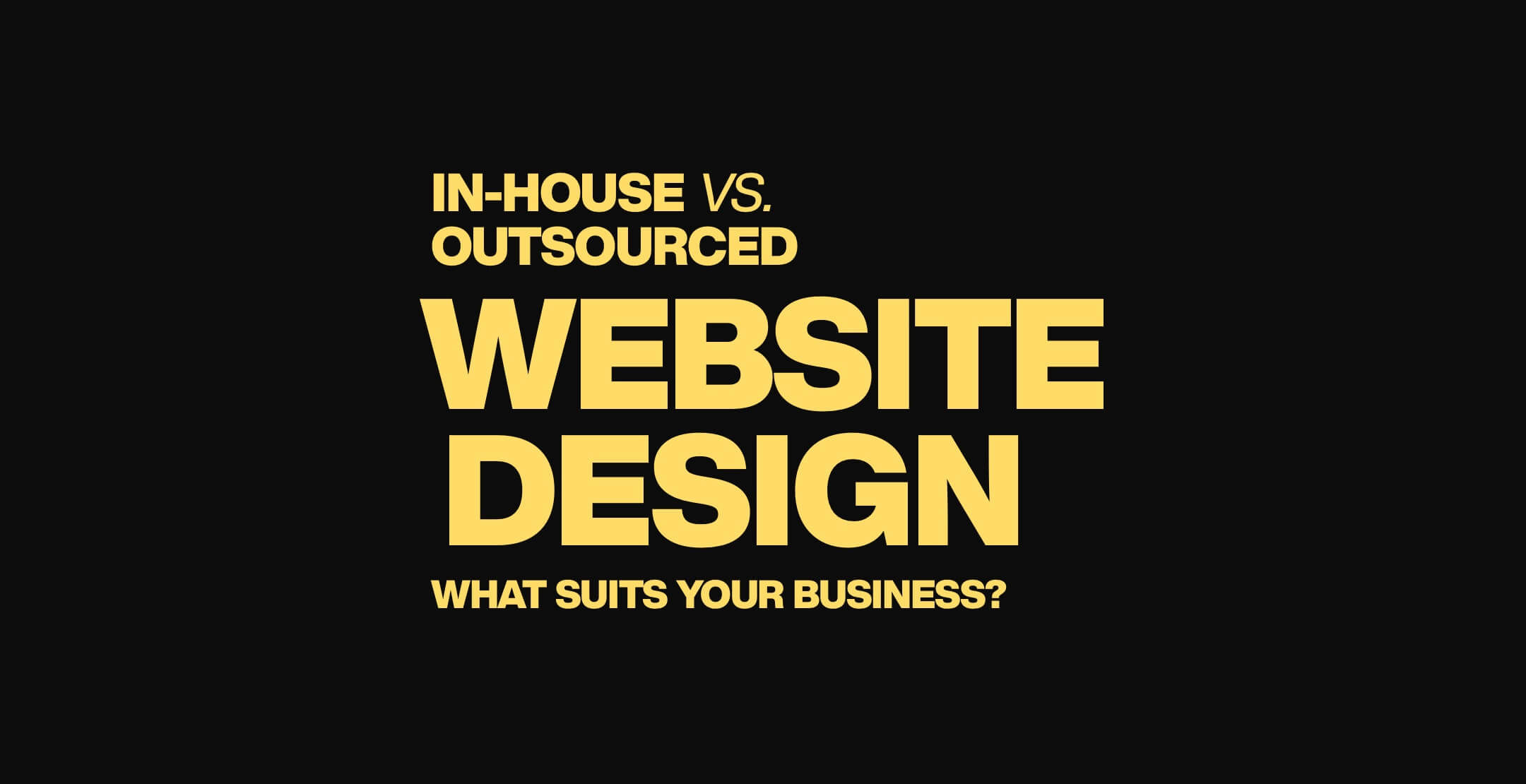Recently I had the great fortune to start the process in planning a renovation of our family home. We bought a small three bedroom place and we wanted to plan for the future and the need for more bedrooms. This entire process has taught me quite a lot about building and renovating, but also about what we do at Thirtyfour Creative. The parallels I drew were so interesting to me that I thought I should at least document it in an article in the hopes the metaphor and literal process could assist people in what to expect during a website project.
If you’ve ever spoken to me about websites, I often use the analogy of “building a website is like building a house”, so this process just drove my analogy home and made it resonate more than ever with me.
So where to start? Let’s start with our dream.
Our vision
My family bought a great three bedroom home (our first home) and it was all the dreams I’d ever had growing up to have a house, with a yard for my kids. It had all the bones we needed to stay, and grow for the future. The dream was real and we couldn’t be happier.
As we lived in the home for a couple years, we began to dream about the next step, which in this case, because we loved the area and the neighbourhood, was to plan renovating to allow the house to grow for our future expanding family. We chose to look into renovating rather than a knockdown rebuild, because well, we assumed it would be a more cost effective option, and we’d be able to keep the house that we bought as our “first home”.
To start, we needed someone to help do the plans and bring our vision to life. We contacted a home designer. Essentially like an architect, but they had past experience in life as a builder, which was a great plus for us, as they’d be able to look at the plans and ideas with more than just a “vision” of what it would be, but able to put a relatively practical plan to it. As you can imagine, full blown architects often make something incredibly beautiful, but sometimes do things that look great, but are an absolute nuisance to build, or incredibly costly.
The process with this designer was fantastic. They listened, they acted and provided some great insights on ideas that we had never thought of. I’m a very imaginative person, as you can imagine being a designer, but I didn't even think of some of the ideas they had. This comes down to their experience and expertise in their specific field, which I saw from our first meeting.
Once they provided us with the plans that we agreed on, we had to start contacting builders. This was where things got…interesting.
The hidden costs and unknown process
In the renovation and building industry, you have to contact and engage a myriad of people. Designers, builders, electricians, the council, certifiers and honestly about 5 other things I’d never even thought of. Hell, I had to pay for an arborist to come to the house to look at our trees and tell me that they wouldn’t affect the build. Which I could have done myself, but because there is a huge list of compliance that needs to occur, it had to be done “officially”.
No one company does it all. They all rely on each other to refer to each other. This was where I started to get overwhelmed and just plain frustrated. As we went along the journey of DA approvals (which we needed for our build), I just felt every single time something came up, another person was coming to me with their hand out for more funds. Now, none of them were doing anything wrong. But because I didn’t have a clue about the process, and not a single person was ever able to tell me “these are all the things you need, these are the people you need to speak to and this is how much it will cost” it just kept on coming and it drove us crazy.
Once all of these things were done, we had to circle back to a builder. Now that all of this information was put together, like a “scope for the project” but with more detail than I’d even though, we got quotes.
We decided to go with a builder that had a great reputation, but also came in on a budget we felt was fair. Once we had that, we could formally apply for the DA approval with the council (who also put their hand out for their part, but that’s a conversation for another time).
Fast forward to DA approval, and conditional approval from the bank, we were ready to go!
Scope changes vs underquoted
The next step was to take everything that was approved back to the builder. This is where they get their final quote together for everything to be finalised. As I said earlier, builders don’t do everything themselves. They subcontract and find electricians, plumbers, concreters, tilers, floorers, cabinet makers, etc. Which is totally fine, you can’t do everything. Everyone specialises in something and they get experts in certain areas to come in to help. But here’s where it all went to sh*t.
Their quote came back not just a little over their initial quote, but nearly double. We were shocked. We questioned it, and they also admitted it was higher than they thought.
What was the issue?
Once they got the quotes from every trade, who put their little markup on the job to “cover overages”, then the builder got it and put their mark up on top of the previously marked up quote, it all added up super fast.
In all honesty, this gutted us. The cost was far outside what we expected, or could afford. So we started to get quotes from other builders. After speaking with 6 builders, the story was the same for them all. Once they had all the information, and the cost of all the trades and markups just rendered the project impossible for us.
All the money paid to this point was just rendered useless because we couldn’t afford the actual build of the project. We spent nearly $30,000 to find out we couldn’t do the project.
This wasn’t a matter of us changing the scope either. Nothing changed. We were incredibly clear during the quoting process, what we wanted, layouts, even spreadsheets with all of our tiles, flooring, bathtubs and even the taps we wanted. We didn’t change the scope, the project was simply underquoted.
Where we’re at now
So after all of that, and coming to the realisation that we’d essentially “lost” that money, we’ve decided to cancel the renovation.
We have a plan to go down the knockdown rebuild path. We’ve found another builder whos quote for the project in all is detailed, but also on budget for us. It comes with a huge myriad of considerations, like having to find another arrangement for our family to live for an entire year, realising we’ll lose our “first home” in the pursuit of something that will eventually be bigger and better, but has a bitter sweet taste to it.
The point of this article was to vent a little, but also showcase what I learnt during this process and why it will benefit you as the reader when considering a new website project.
How building a website is like building a house
Briefing and scoping
The scoping of a renovation is very much the same as building a house. It’s impossible for a builder / developer to know what you want to build until they have a really clear idea of what you want and what will be required to build it. They need to know how many bedrooms you want, bathrooms, floors, utilities and the design etc. Same goes for a website's pages, templates, modules, designs and functionality.
The disjointed process for the renovation, relying on too many parties to have a cohesive idea of how much it’ll cost and provide us with an accurate quote was terrible.
This is why when building a website, it’s important to be clear on what you want, what you need and how you expect things to work once it’s complete. The benefit of working with us is that there are no other parties involved. We design and develop every website in-house. This means the people scoping, are the ones that design and build your website, we know how this works, we’ve done it a hundred times and know what it takes to do it right.
The clearer you can be when we scope your project, the less likely the scope and costs will need to be revised.
Be clear on the process
If you ask an agency what the process is, and you get handed a pdf or just a website page, run. If they can’t explain it to you, they probably don’t understand it themselves. This is where Thirtyfour Creative being a small agency really sets us apart. The person you speak to in sales, design and throughout the project is likely the same 1 or 2 people. For all website projects at Thirtyfour, you deal with me, the owner, the designer and the project manager. I do this on purpose so that I can ensure every project is held to the quality I want the business to be known for. And it has worked.
If you are every unsure of the process or what’s next, it’s important you ask. You need to be comfortable with every step, but most importantly, it helps you and us with timing. If we can hold the project to the timelines, both on our side and yours, things will run smoothly.
Scope change
This one is pretty obvious. If you have a scope laid out, planned, approved and paid for, and you go and make changes, there’s a chance it will increase costs. But note it may not!
Think of a renovation, if you change the tiles you want to use in a bathroom to something say a little cheaper. What would you expect? To be given that money back from the approved scope and budget? In almost every instance, that won’t be the case. It’ll mean that additional scope is now available for something else that you may change and may increase the budget.
If you change your tiles to something that comes from Spain, and is made by a family that’s been making handmade tiles for 200 years, then assume the cost will increase and that will need to be an adjustment to the project scope. Which, let's be honest, it sounds fair, don’t say otherwise.
When we scope website projects, we’re using our years of experience to estimate what each page will require, the functionality 99% of websites require and also adding some space in there for making the site extra sexy (when customers let us go for it).
This means when you come with a request for something to animate in a crazy/amazing manor, there may be some considerations from a scope increase, or reallocation point to accommodate that request.
We do everything in our power to keep it in the scope of the project and are flexible where we need to be. You can ask any of our clients that have built websites with Thirtyfour Creative, we work with you to achieve the website you want and need and do our absolute best to keep it in that scope for you. But it comes down to your requests at the end of the day.
What we want you to take away from this
Here is your short list of what we want you to take away from this story and how it can be applied to a website project.
Be clear on your requirements
If you can’t tell us what you want, it’s hard for us to give it to you. In order to create a well planned proposal and scope, that will have the lowest possibility for scope changes and cost increases, you need to be as clear as you possibly can with us during the scoping phase of the project. We’ll give you as much detail as we can, be vague where we can with your interest at heart to ensure we have wiggle room for when you wiggle, but anything that requires scope changes, you need to prepare for.
Be aware of costs and “hidden costs”
Hidden costs chipped away at our trust. Every new ‘small’ thing added up. That’s why we’re massive on transparency when we build websites. You deserve to know exactly what you’re getting and what it’s going to cost.
Just to be clear, “hidden costs” don’t always mean that they were being hidden from you to sneak up on you. We had many “hidden costs” in our renovation because we weren’t told of the entire process. They weren’t hidden to the builders, but we sure as hell didn’t know about them.
Know your options
Don’t overcommit. In the end, we didn’t just push forward because we’d already spent money. That was a hard call — but it saved us from a much bigger mistake of overcommitting just to get it done. The path we’re on now isn’t the wrong one, it’s a different one.
There are always options when it comes to your website project. It’s about finding the one that’s right for you. Whether you’re looking at it from a budget perspective or a functionality or need requirement, there is an option that ticks the boxes that will make you happy, you just have to be patient to find it.
Scope changes
It happens. But our goal is to give you what you want, so if you request something that will take more time to design or build, we have to bring that to you to approve before we can proceed. Everything takes time, and that’s our unit of currency. Trading time for a solution. Every business does this, whether it’s building a bathroom, doing your taxes, paying rent. It’s an exchange for something, in this case, an exchange of additional funds for team members to add something on top of the scoped project.
Some things that could mean additional scope and costs:
-
You changed the design after the designs were approved for development.
- You changed how something was developed to achieve a new functionality or change to requirement.
- You break the timelines set out in the project, hindering our team from being able to proceed. Think of this like changing the plans of your house and the “builders” coming back in 5 weeks after you finally approve it. This means that we have to shift our production line and other projects around to accommodate your delays.
- You simply ask for something new. This happens all the time. As the project progresses, the teams identify new pages, new functionality they want. We can accommodate anything, but there may be a cost to give make it.
- Underestimating your involvement. Some customers take items on themselves to assist and save costs, which is fantastic. But if you overcommit and then can’t handle the work, passing it back to us to do will change the requirements and scope. We’re here to help you, as much as you want us to help.
Potential warning signs
Here are a couple warning signs that a project isn’t being scoped properly and there will likely be a disconnect and scope change coming your way from the agency you’re talking to:
-
They say yes to everything and don’t question anything.
-
They don’t design and develop in-house.
-
The person you’re speaking to isn’t the one you’ll deal with throughout the project.
-
They can’t speak to how it will actually be built or can’t explain to you how you’ll be able to use it.
-
They tell you that the website will be number one on Google in the first month (no one can promise this, don’t believe it).
If you’re thinking about building a new site, and you want a team that treats your project (and your money) like it’s their own, we’d love to chat.
At the time of writing this article, I’m discussing a website project with someone who wants us to “take over” the build of their current project from another agency. Like our situation with our renovation, it looks like it’ll be more cost effective for us to start from scratch and do a knockdown rebuild of their website to assist.
Before you go too far in your project, ensure you’ve checked the crossing of the warning sign list above.
If you have questions, or want to discuss your potential website renovation, send me a message.





